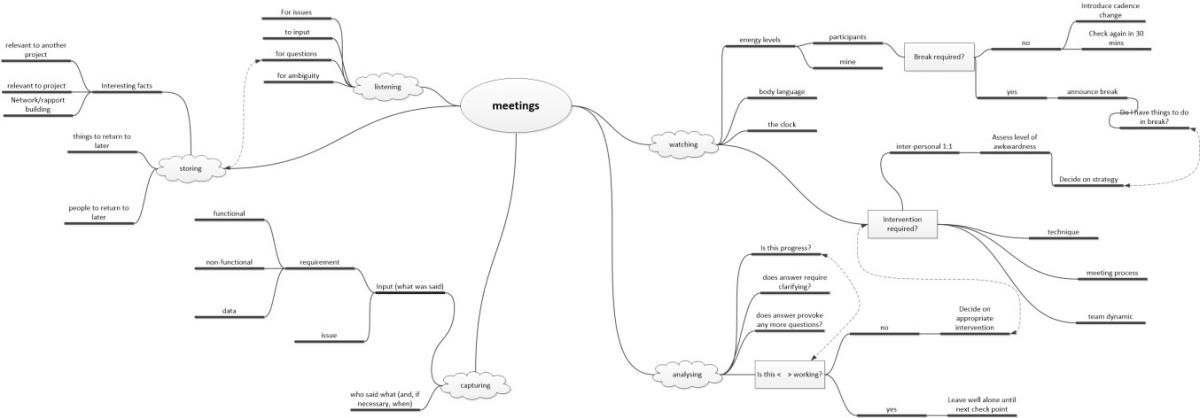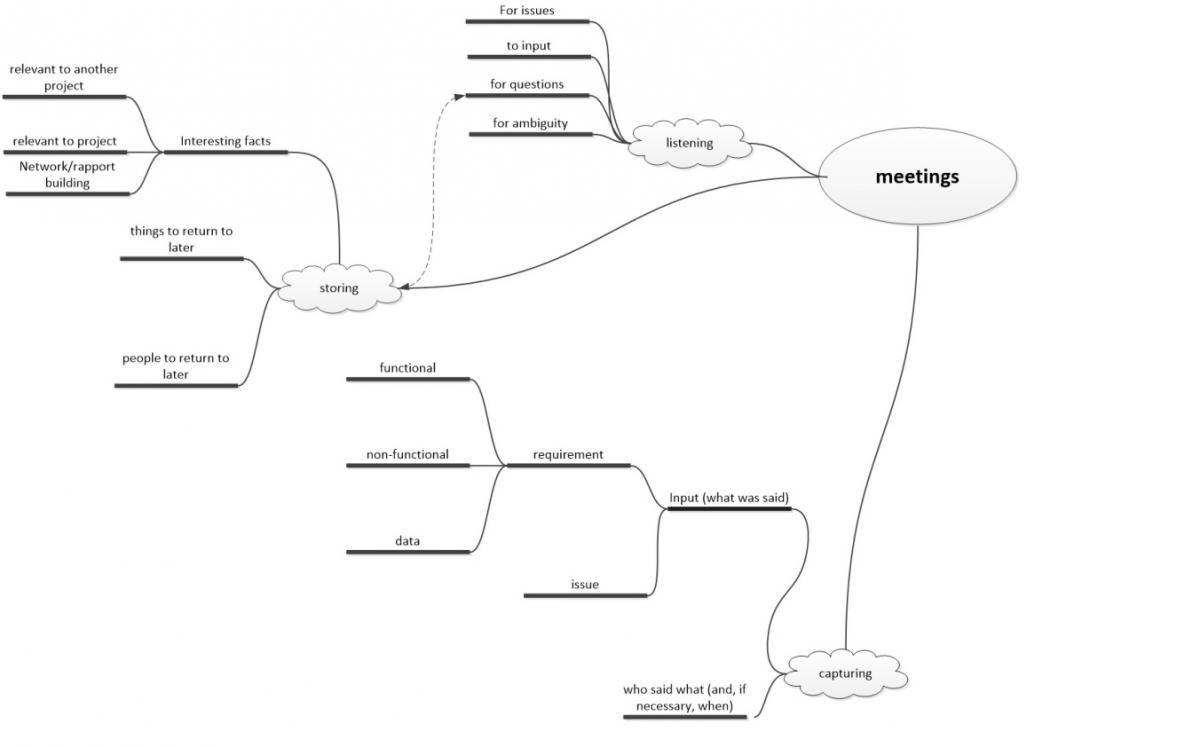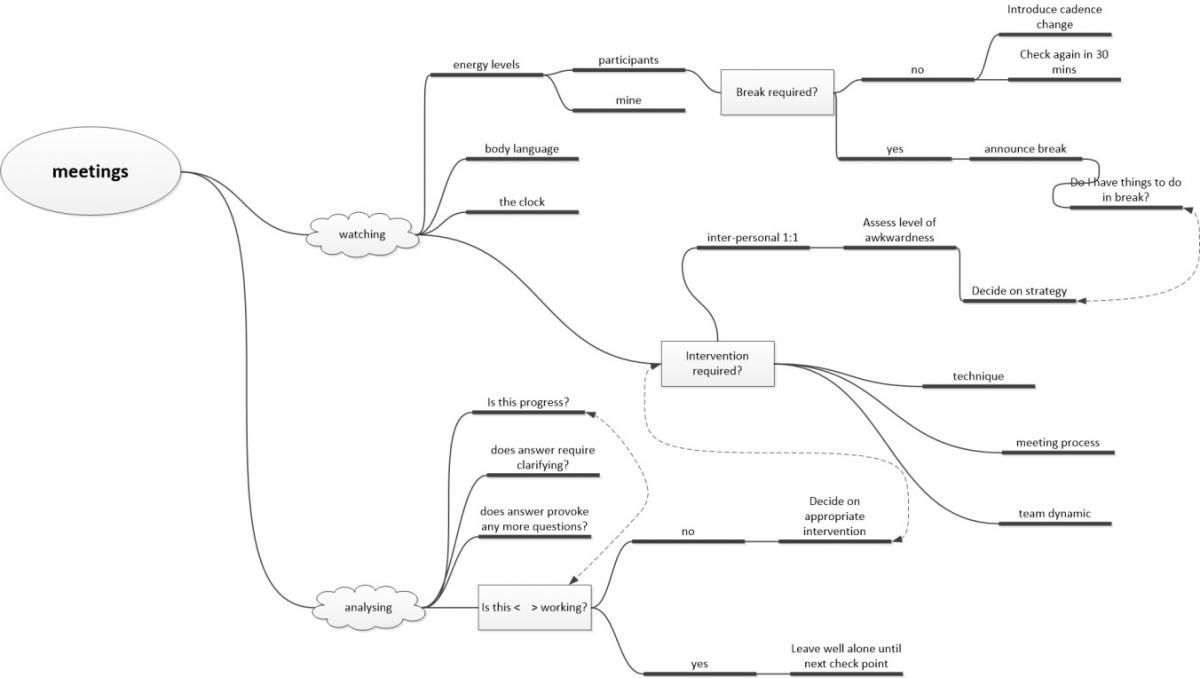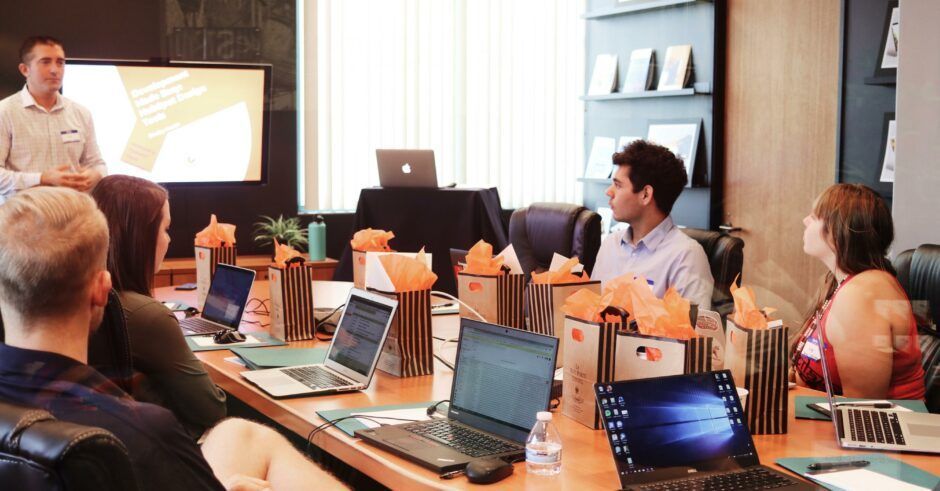One of the constant urban-myths about the Business Analyst role is the common assumption/assertion (invariably by non-BAs) that all we do is ‘run meetings’. I’ve heard this a few times during my career and it really exercises me. There is a lot more to the BA role than that; in fact there is a lot more to running meetings! As part of my current role I devise a lot of training material and someone recently asked how I go about running a meeting. It wasn’t until I was asked that I attempted to document my thought processes and it proved surprisingly more difficult than I imagined!
As is usual for me when I’m trying to document large amounts of information I decided to do a mind-map. This technique always helps me in collating and organising complex situations and I enjoy doing them. The first draft is always quite a mess but I can then start organising it into groups or clusters of information because once I have the clusters I can then arrange them as I see fit. For instance, I could organise by complexity or priority or even by business value, depending on the question I am trying to answer. Anyway, let’s get back to the point at hand. Once I had completed the first attempt at a mind map I found I had several clusters of information. These represented the main activities that I undertook when running a meeting. In no particular order they were listening, watching, analysing, capturing and storing and once I had identified these groupings the rest of the information flowed quite quickly and soon took the shape of the picture you can see below.



I appreciate the picture is quite a complex one, so I include two blown-up sections and will try to run through each cluster in the summary below.
Listening. During a meeting there are several things I am listening for; issues being raised, the actual input to the meeting, for ambiguity (so I can resolve it either then or later) and questions, either those being asked by other people or questions I may need to ask myself.
Whilst I am listening I am also storing incidental information that I pick up during the meeting. These can take many forms but predominantly fall into things I believe will prove useful in either future assignments working relationships. Sometimes I need to return to this information at a later stage in the meeting so mentally flag this for later action.
I’m also capturing information usually on a whiteboard or laptop. This is essentially the raw inputs from the participants and can be either requirements or issues. If they are requirements I attempt to sort them into functional, non-functional or data requirements. I am also recording who said what and if necessary, when they said it.
Whilst all this is going on I am continually watching the group, looking at body language, checking energy levels (both those of the delegates and myself) whilst also keeping an eye on the clock. If either the clock or apparent energy levels indicate a break is necessary I will advertise this to the group and consider if I need to do any interventions during the break. Interventions come about through observing what is going on within the group and deciding if I need to do anything about it. If I do, it will usually take the form of either:
- an interpersonal intervention – usually required if you spot an individual who is behaving in a disruptive way
- introducing a new technique – this can be required when an unexpected process or problem is encountered and you need to examine it in a different way
- changing the meeting process – again this may be required if something unexpected occurs during the meeting and you need to incorporate a new strategy, such as revising the agenda or desired outcome etc
- team dynamic – if something is interfering with the team dynamic, i.e. the team is getting tired or a dispute has arisen I may potentially need to intervene
Finally, I am analysing what is going on to determine several important indicators; are we making progress? Does anything need clarifying about what has just been said? Does it provoke any further questions? And finally, is whatever activity we are currently undertaking actually working?
You will no doubt have noticed that several of these mental gymnastics occur on the picture and in the above narrative at several places but this is a symptom of trying to describe an inherently intellectual and instantaneous process in a documentary format. Needless to say, most of this mental processing is invisible to other participants although there is ho harm in involving them in your deliberations, for instance when bookmarking an issue to come back to you can say to the “let’s some back to ‘x’ in a minute; don’t let me forget as there’s something I feel might be important there”. Thus not only are you making sure you don’t forget, you are also including the group in the process and indicating you are still alert.
So that’s a quick voyage around my mental construct of managing meetings…. To be honest, I probably haven’t got all the things I do on this picture and you’ll probably have things you would add or subtract. But whatever the differences between my view and yours, I think we can put to rest that ‘all we do is run meetings’!!


